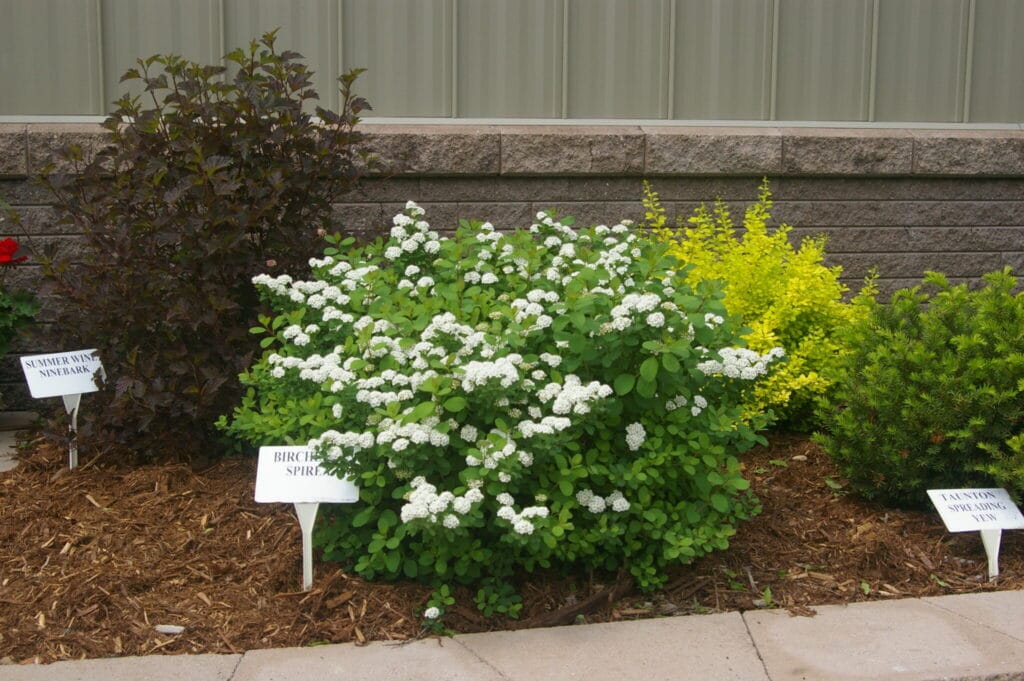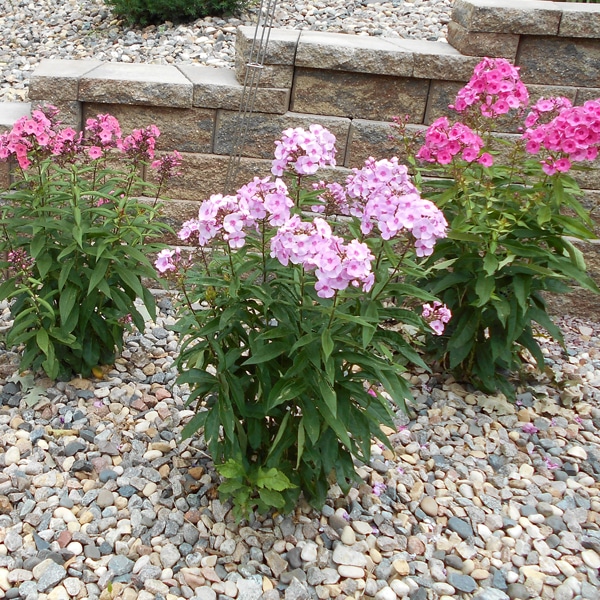Trimming
Once your plants are established, trimming is one of the most important maintenance jobs you’ll have. Done annually, it will require very little of your time to keep your landscape looking good and will add years to the life of your plants.
An important part of pruning is knowing when to prune plants. There are several types of plants that you may have in your landscape that require pruning at different times during the year. Listed below are types that you may have.
If the following guide doesn’t answer your questions, don’t hesitate to give us a call. We can either help you over the phone or we are happy to make a stop at your home and show you how if the plants were bought from us.

Spring Flowering Shrubs
- These bloom in the spring and include varieties such as lilacs and forsythia as examples.
- The time to prune these on an annual basis is in the spring, just after flowering is done. This gives these plants time to form flower buds by late summer to again give you a flower show the following spring.
- If these plants are overgrown and you need to cut them back severely, do this during the dormant period when the leaves have dropped and before spring growth starts. You’ll lose much of that spring’s bloom, but they will put on a beautiful show the following year.
Summer Flowering Plants
- Examples of these would be plants such as potentilla, spireas, hydrangeas and shrub roses.
- Prune these types of plants during the dormant season, anytime between about November and the following March.
- Many leafy shrubs don’t flower and are grown for their foliage color, such as Barberries and Ninebarks. Others will be grown for fall color, such as viburnums and Burningbush.
- Pruning can be done in the same dormant period as the summer flowering plants. They can also be trimmed lightly anytime during spring to mid summer if they start to look somewhat ragged. Avoid pruning in early fall, as this may encourage late season growth.
- The following list are what we call exceptions to the rule. Their requirements are slightly different than most common varieties:
- Weigelas: We recommend that they best be pruned after their first flush of flowers which is usually in June or early July. This will give the most consistent flowering. They can however be trimmed in the dormant season as well, but some of the early season flowering may be lost.
Evergreen Shrubs
- These include arbor vitae, Japanese yews and Junipers. Pruning can be done on these during most of the year. Avoid trimming in freezing weather.
- Pine and Spruce: Trim a portion of the ends on the new growth as it emerges in late May. This category includes dwarf forms such as Mugho Pine, Tannenbaum Pine, Dwarf Norway and Globe Colorado Spruce.
Deciduous Tree
- Small branches can be trimmed any time during the year, but the best time to prune is during the dormant period.
- Trees like Maples will bleed if trimmed in early spring, but the bleeding will not harm the tree. Oaks, in particular, should be trimmed only during dormancy.
Fruit Trees
- Winter pruning is best for all types of fruit trees, preferably February to early April.
APPLES AND PEARS
- Remove branches that cross, branches that head to the center of the tree and all watersprouts, which are the pencil thin branches that come up in the center of the tree.
- Thinning out and opening up the center of these trees is the key to good production and health.
PLUMS, CHERRIES AND APRICOTS
- These can be thinned like the apples, but seldom need the attention that apples do.
- Always remove branches that rub together and those that interfere with mowing.
Grapes
- Prune these when dormant, preferably March or early April. The stems will bleed, but this does not harm the plants.
Raspberries
- These come in two types, June bearing and everbearing. Their trimming varies somewhat.
- June bearing: Prune in March or early April to remove old, woody canes. This can be done in summer as well after harvest, but easier done when the leaves have dropped.
- Everbearing: Two methods will work with these
- Pruning just the old canes out during March or early April will continue to give a two crop season.
- Pruning all the canes to the ground in March or early April will give a fall crop only
Watering
Watering becomes so dependent on the type of plant, temperature, amount of rainfall and time of year, that it’s difficult to give one specific guideline for watering your new plantings. We have listed some guidelines below for average conditions, but you need to be aware of variables that could affect the watering schedule.
If you have a sprinkler system, we suggest you redirect any heads that may spray into the area of your plants. The frequent, many times daily, waterings that a sprinkler system provides becomes way too much water for your new plantings.

LEAFY SHRUBS
- water twice per week
- slow watering- let the hose flow at half speed for about 3 or 4 minutes on small shrubs and 5 to 6 minutes on larger plants
- this works out to 3 to 5 gallons per plant
EVERGREEN SHRUBS
- water once per week
- slow watering as for leafy shrubs
- about 3 to 5 gallons per plant
- 10-20 gallons for evergreens 3’ tall or larger
SHADE AND ORNAMENTAL TREES
- water twice per week
- slow watering- let hose flow at half speed for 10-15 minutes per tree.
- for large trees, water for 20-25 minutes
- 10 gallons for trees 6 or less
- 10 to 25 gallons for larger trees
